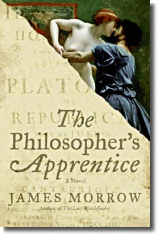
He applied the Page 69 Test to Empty Ever After, the fifth of his Moe Prager novels, and reported the following, beginning with a passage from page 69:
“No wonder you’ve been such a bitch lately.” I was laughing. She wasn’t. “Come on, you know I hate to drink alone.”Learn more about the novel and its author at Reed Farrel Coleman's website.
“No!”
“What the fuck is the matter with—”
“I’m pregnant.”
I drank my scotch, quickly, then drank the glass I poured for Carmella. After that, I said nothing.
You might suspect that this exchange is between lovers, but you’d be mistaken. Moe Prager and Carmella Melendez are partners, yes, but in a Brooklyn based PI firm, not in bed. Although Moe’s been divorced for over a year, Carmella is single, and they are deeply attracted to each other, they’ve shared a secret for nearly three decades that keeps them from acting on their impulses. Besides, the case they’re working on is enough to distract anyone. Moe’s ex-wife Katy is losing it, seriously losing it. After her father and brother’s graves have been desecrated by vandals, Katy begins to think she’s being haunted by her late brother Patrick. She hears his voice on the phone, sees him lurking around corners. It would almost seem funny if Moe hadn’t heard the voice and seen him too.
“Just because you always survive doesn’t mean you’re always okay,” I said, stroking her hair. I wiped her tears away with my thumb.
“What am I gonna do, Moe?”
“I don’t know. What do you want?”
“I want not to have gotten knocked up is what I want… I pray to God, always. Since I was a little girl, I pray to God, but he don’t answer my prayers.”
As Moe goes on to tell her, God answers prayers. The problem is the answer is usually no. In what is by far the most gut-wrenching of the five Moe Prager novels, some prayers do get answered with something other than no. Unfortunately, evil men pray too.
Visit the complete list of books in the Page 69 Test Series.
--Marshal Zeringue
























